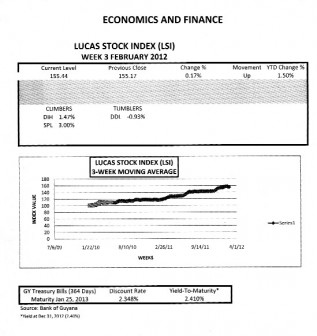Expansion
The expansion of the construction sector has provided impetus to the mortgage market. This column previously has looked at the implications of the construction boom for the housing market. This time the article will examine trends in the mortgage industry and what they say about the relative strengths of the two main groups of suppliers of those mortgages. This is not to diminish the role that the expanded economy has had on the industry and the ability of the key players to reposition themselves in the mortgage market, a phenomenon noticeable about both labour and capital.
The principal suppliers of mortgages are the commercial banks and the New Building Society (NBS). Insurance companies and trust companies also offer mortgage products as part of their service but their supply represents no more than one percent of the mortgage market. The commercial banks and the NBS have been supplying mortgages for many decades, but the events of contemporary times make for interesting study. Not so long ago, the NBS appeared to be king of the mortgage heap in Guyana. In 2003, the NBS accounted for about 75 per cent of the mortgages issued while the commercial banks accounted for 25 per cent of the notes of this type.

In less than a decade, the banks have surged past NBS and are slowly relegating the latter to an incidental player in the construction boom. The inversion of the banks and the NBS is not necessarily due to any lack of vision on the part of NBS, but more of the opportunities that have come the way of the commercial banks.
Power shift
Before seeking to talk about the power shift, it would help to point out some important features of the mortgage market in Guyana. It should be understood that mortgages are made in the housing and commercial markets and each has its own drivers that influence consummation of the transaction.
The mandate of the NBS is circumscribed by law which limits its lending to the housing sector. This distinction is important because it helps to define the framework in which this discussion is taking place. As readers might be aware, the NBS was created to enable its members to buy houses.
Consequently, participation by the NBS in the mortgage market is confined to the housing market. It is only by limiting the discussion to the housing market would it be possible to make fair and relevant comparisons in the mortgage market. Of necessity, the discussion will have to descend into the microeconomic realm at times to bring out some of the differences between the various players in the market.
Comparisons
The mortgage market is not a clearly defined one, especially since the lenders do not provide a breakdown of their portfolio that comports with the way in which they design and price their products. Nonetheless, the mortgage market possesses characteristics that help to facilitate comparisons between NBS and the commercial banks. The greater variability in mortgage products is among the commercial banks and an understanding of the structure and diversity of the market would be gained from discussing developments in the commercial banks. In addition, the product design and pricing observed among commercial banks is also noticeable in the NBS.
For example, an important determinant of the market is the income level of the borrowers. In Guyana, some banks use the term low-income to describe mortgages that they offer, clearly pointing to the income level of the borrower. In other instances, the term “new government” is used to describe mortgages given to the category of borrowers who acquire house lots through the national housing programme.
This housing programme is intended to assist low-income persons to obtain property and to finance the building of a home once they meet the criteria of the lenders.
Duration
There is some evidence that the mortgages of commercial banks can also be distinguished by their duration. Mortgages that are associated with low-income borrowers tend to range between 25 to 30 years. The mortgages that are offered to middle-income persons can carry shorter maturity ranges. For example, maturities of five to 20 years have been seen in the advertisement of one lender as have maturities of 15 years for middle income borrowers for other lenders.
The thinking behind the longer maturities for the low-income borrower might be linked to an effort to keep the installment payments at an amount that the borrower can bear. When there is no advantage to the lender in changing the interest rate, the next best option is to change the maturity time of the mortgage. In behaving this way, the lenders also show that they have a good understanding of their customers.
Pricing
Linked to the two previously referenced characteristics of income and maturity is the size of the mortgage which appears as another way by which lenders distinguish their mortgage products. Based on the information provided by the commercial banks, low-income mortgages can be less than or equal to $3 million.
In some instances, the upper limit can reach $8 million. The middle income mortgages can range from $2 million to $12 million.
The NBS on the other hand offers a maximum mortgage size of $12 million. The NBS also offers products in the $3 million range, indicating that it operates in the low and middle income markets.
(To be continued)









